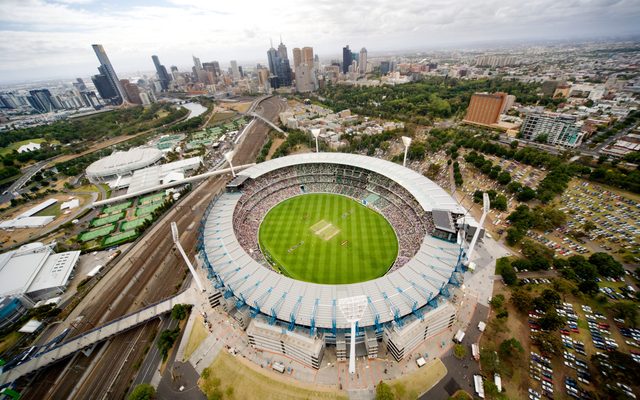This article is from the Australian Property Journal archive
THE national upswing in home values is “all but over”, with Australia seeing its weakest price growth result since the beginning of last year amid a rebalancing of supply and less buying activity – and meanwhile, the rental boom could be over, too.
Prices in Sydney fell by 0.2% and in Melbourne by 0.4% in November, meaning the major cities record spring selling season falls of 0.5% and 1.0% respectively, according to CoreLogic’s latest Home Value Index, which came in at 0.1% for the month.
“The downturn is gathering momentum in Melbourne and Sydney,” said Tim Lawless, CoreLogic’s research director, “While the mid-sized capitals, which have dominated the growth cycle of late, are also losing steam.”
Perth led gains over the month at 1.1%, with Adelaide (up by 0.8%) and Brisbane (0.6%) in tow.
Rolling quarterly house price growth was again strongest in Perth (up by 3.0%) – albeit the softest three-month rise since April – followed by Adelaide (2.8%) and Brisbane (1.8%). Adelaide and Brisbane’s gains were the cities’ softest since March 2023 and June 2023 respectively.
Darwin and Canberra saw slight rises in November, while Hobart dipped.
House prices in the capitals lifted 0.1% in the month and are 0.3% higher year-on-year. For regional locations, those figures are at 0.3% and 1.1% respectively.
Weaker housing conditions in spring were accompanied by a rebalancing in available supply as vendor activity lifted. Capital city listings were up 16% since the end of winter, with Perth (up by 33%) and Adelaide (by 25%) recording the largest lift in advertised stock levels, albeit from an extremely low base, with total listings remaining well below average in these cities.
Sydney and Melbourne listings are now tracking 10.4% and 9.1% above their previous respective five-year averages, to be at their highest level for this time of the year since 2018.
However, an undersupply of newly built housing is likely to provide some support for housing values on the back of record levels of population growth since international borders re-opened.
Purchasing activity is “winding down” at the same time, and the combined capitals auction clearance rate has held below the 60% mark since mid-October.
The outlook for housing markets has “arguably deteriorated” over the past month, CoreLogic said, with core inflation holding high, labour markets holding tight, and the chances of a rate cut early next year becoming less likely, “not to mention the rising geopolitical risk”.
“A lower cash rate will be a positive factor for housing markets,” Lawless said.
“Lower mortgage rates will provide a lift to borrowing capacity, and, along with lower inflation, should see an improvement in serviceability assessments and see a further rise in consumer sentiment,” Lawless said.
“A couple of rate cuts might be enough to shore up a declining trend in home values, but it is hard to see any material upward pressure returning until interest rates reduce more substantially and affordability barriers are less formidable.”
High mortgage rates and soaring prices have driven housing affordability to its worst level on record, as Australians work overtime, take on second jobs, and even skip on healthcare costs in a bid to break into the heated market.
SQM Research’s latest Boom & Bust report offered a base case strong population growth, no inflationary outbreak and up to two interest cuts, which it said would see Perth’s housing market lead price rises in 2025, and up to 5% wiped off values in Sydney and Melbourne.
Perth values would rise 14% and 19%, and while at a rapid clip, it would represent a slight slowdown from the 25%-plus price rises that have been seen this year.
Rent growth slowing down, too
CoreLogic’s national rental index continued its relatively flat run of growth, rising 0.2% in November to be 5.3% higher over the past 12 months – its smallest annual change since April 2021.
A year ago, rents were increasing by 8.1% annually, and by more than 9% over the prior two years.
Lawless said the annual trend is set to slow further from here.
“It will be interesting to see if the rate of rental growth rebounds through the seasonally strong first quarter of the year in 2025, but beyond any seasonality, it looks increasingly like the rental boom is over.”
Perth’s unit sector is still recorded the highest annual rate of rental growth among the capitals, at 9.7%, but the pace of gains has eased from 16.6% seen last summer. Perth is also recording the highest annual rate of growth in house rents at 8.7%.
Lower population growth, especially less net overseas migration, and a gradual recovery in the average household size have both moderated rental demand. A trend towards smaller households during the pandemic had been a key factor boosting housing demand, particularly demand for rental housing, as group households split up and Australians gained a preference for more space.
According to the latest data from PropTrack, the national vacancy rate was up 0.19% over October to 1.36%, reaching its highest point since July 2023, however still remains incredibly low overall.
“A record low in rental affordability is probably a central reason for the rebound in household size, with high rents likely to be forcing a restructuring of households as renters look for ways to minimise their housing costs,” Lawless said.
Gross rental yields have firmed, holding in the high 3.6% range since August. Sydney continues to record remarkably low gross rental yields at just 3.0% across all dwellings, while Darwin remains the only capital where yields are close to investor mortgage rates, which currently average around 6.6% on a variable rate for existing loans.




